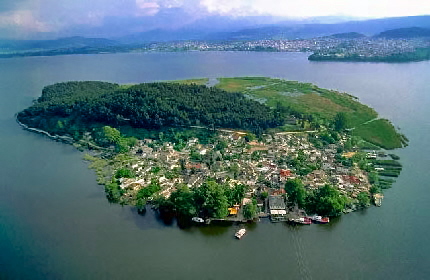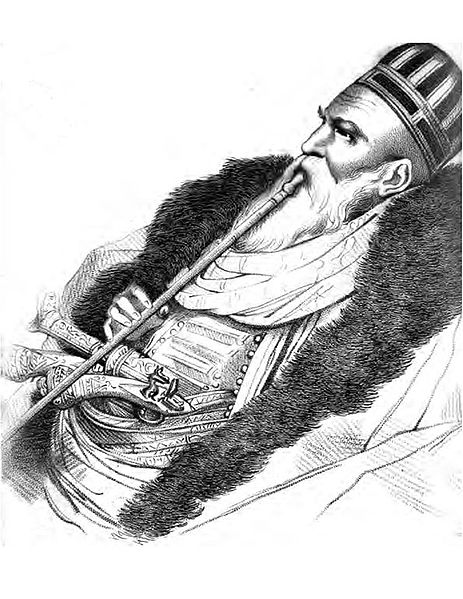You are here: The Observer: Culture
| Visitors to Ioannina’s Little Island Discover a Big Past February 24, 2010 -Chrysanthi Kontou |
|
 |
“Hey, mom, look at the mosque’s tip over there! Can you see the birds flying all around it?” said the little girl, her finger pointing at the mosque. Her name was Nadia and she was in Ioannina with her mother on a three-day vacation, as I heard them explaining to a man next to them. They were on one of the little boats that take you to the little island of Ioannina. |
It was a Saturday morning, and I was also on the same boat with a couple of friends from Athens who were visiting. I had planned to show them the little island of my city. Nadia was sitting next to me, and from the way she was jumping from one foot to another and turning her head in all directions not to miss anything, she made me want to explore my hometown site as a tourist visiting Nisaki for the first time would. The island is located almost in the center of the natural lake of Ioannina, Pamvotida, and its name is Nisi (island), but sometimes people from Ioannina call it Nisaki (little island). Almost every part of the island is full of trees: pine trees, cypress trees, plane trees. The island’s seven monasteries once made it a center for monasticism; today, the monasteries are museums open to the public all year round. An old friend of mine, Dionisia, who lives on Nisaki, was in charge of one of the monasteries. “You can actually sense the holiness and the sacredness of the place just by smelling the odor of the burnt wood,” she said. “Or by seeing how the eyes of the saints in the altarpieces are missing, gouged out by the Turks, or even by feeling on your skin the warmth of the thousand candles, lit by both locals and tourists.” During our 10-minute trip to the island, Nadia asked the captain what the name of his boat, Kira Frosini, meant. “You know, my little girl, around 200 years ago, Ioannina, as all Greece, was under Turkish occupation,” he began.” In Ioannina, the leader of the Turks was Ali Pasha. This man had a son, Mouchtar, who had a secret affair with Kira Frosini. When Ali Pasha found out, he captured and tortured Kira Frosini along with 16 other women that day. Then he dropped all those women in the lake with rocks tied around their necks and let them drown. Since then, this woman has been a symbol in our city.” As soon as we got off the boat, we came across two restaurants, owned by two of the 100 families that live on the island. There, one can try traditional delicacies such frog legs and eels, or different kinds of fish caught in the lake. As you start walking along the little stone-paved lanes, you see - one next to the other - small stores that sell silver folk artifacts made by the owners in their workshops and famous throughout Greece; and cute, wooden stores that sell homemade fruit liquors and traditional candies. As tourists pass by, the owners stand outside promoting their products to potential customers. I already know their tactic, since I have been visiting Nisaki for as long as I can remember. We quickly continue on our way till we arrive at Ali Pasha’s house, now a museum. The house is a two-storey building made of grey stone and wood. When you enter it, you see different aspects of the Turkish way of life, such as the water pipes, the traditional clothes and weapons, and the paintings on the walls depicting battles and hunting scenes. “See over there? You can still see in the floor the holes of the bullets which killed Ali Pasha, as well as clothes, documents and (other) personal effects of both Ali Pasha and Kira Frosini,” said the man who works in the museum. We had already been on the island for three hours and the sun was beginning to hide. We walked back to the boat to return to Ioannina. As we passed by the stores one more time, my eye caught Nadia and her mother shopping for jewelry and silver cordons. Her eyes sparkled and a big smile spread over her face. I am pretty sure that a long time will pass till she forgets Nisaki and the day she spent there with her mother. |
|
Ali Pasha of Ioannina after Louis Dupré (1821)
|
|

